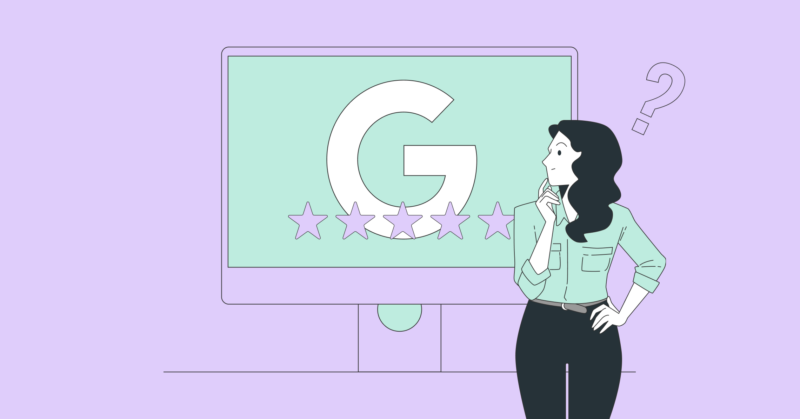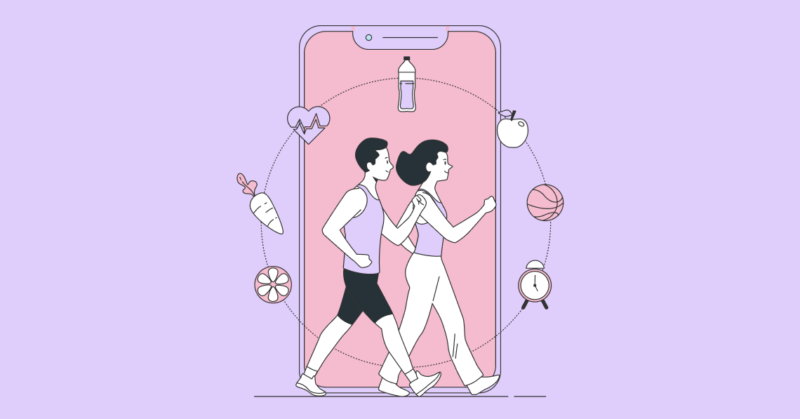One of the strangest debates to emerge in the last decade is the issue of corporate personhood. We’re not going to go anywhere near that argument here, except to say that if corporations really are people then none of us would ever invite them to a party. The general view is that they’re untrustworthy and boring to talk to. We see this playing out on social media everyday, the one place in the world (albeit virtual) where brands actually can mingle and engage with real, biological people:
- 品牌员工共享的内容更多的参与度增加了8倍than when the same content is shared by the official brand account.
- 我们是否真的需要表达任何证据表明人们不信任公司允许您相信它?
这就是为什么员工已经成为宣传项目such a vital part of modern marketing. Whatever the message is that you want to get out, your target audience would rather hear it from your employees—not you. The companies that are executing pitch-perfect employee advocacy programs already understand this, and are happy to have their official accounts take a backseat to the personal ones owned by their staff. The results speak for themselves.
Four Brands Winning at Employee Advocacy (and the One Thing They Have In Common)
Zappos Loved Its Employees Before It Was Cool
As we’ve noted inother posts, a good employee advocacy program needs to be planned out, paying close attention to details: What are the goals? How will you get your employees to participate? What are the parameters for social posts?
但是,对于位于拉斯维加斯的电子商务巨头Zappos来说,这部分可能很容易。当公司成立于1999年时,员工倡导基本上是在业务计划中写入的。当时,对电子商务的大敲门声是,您无法像在砖和砂浆商店中那样获得出色的个性化客户服务。Zappos的目的是为了为所有交易提供卓越的客户服务(即放弃和超越期望)的使命,以改变这一目标。建立以员工为中心的文化是关键。正如创始人托尼·赫(Tony Hsieh)所说,“如果您正确的文化正确,那么其他大多数东西,例如提供出色的客户服务或建立长期持久的品牌或企业,将是天然的副产品。”
For Hsieh, though, going above and beyond was a two-way street. If employees were expected to go out of their way for every customer, then the company needed to do the same for its employees. It’s not enough for Zappos’ employees to be well paid and respected;they need to be happy, too.

This article, written in 2008, shows just how successful the the plan was at nurturing a culture where employees were not only happy, but excited, to be working for Zappos. As a natural consequence, their enthusiasm helped build the brand even more. The author of the article then poses the question, “Are employees a de facto ad channel?” The answer seems obvious in hindsight, but back then? Honestly, it should have been obvious then, too.
But this was before social media really took off and became the ubiquitous, everyday presence it is now. Friendster and MySpace were laughing stocks, and Facebook was only a couple of years into its public existence. This 2008 article suggests readers conduct some “social media experiments” with their own employees to see how it might go.
实验距离今天的Zappos还有很长的路要走。您可以关注@zapposculture在Instagram上,或@insidezappos在Twitter上,以获取幕后花絮,探讨了他们都有多少乐趣。他们在大楼外欢呼,或者在人们在后台排队以自助餐的同时进行卡拉OK,甚至比合理预期的全力聚会更加兴奋。您还可以搜索#insidezappos和#zapponians的主题标签,以了解员工驱动的事实上的广告频道的样子。
现在是完全不同的东西:澳新银行
For as much fun as the people at Zappo’s are having, their culture brand just isn’t for everyone. Carnivals and karaoke barbecues just don’t work for a bank, which needs to present a more serious, thoughtful image. Content marketing is perfect for a business looking to display expert status and thought leadership, but it’s hard to find readers when the topic is...well, boring. Do you want to read banking and finance related content? More specifically, are you going to read random banking and finance related content that your bank shared with you on social media?
This is the dilemma that faced Australia and New Zealand Banking Group asthey tried to reach their 9 million customers (and appeal to new ones) over social media.一个问题:作为一家银行,他们在工作场所的社交媒体周围制定了一些非常严格的政策。很快就意识到他们必须放松规则,并让员工在工作中使用LinkedIn,因为这就是银行家放松规则时的样子。使用LinkedIn Elevate,银行员工可以从内部和外部来源中从批准的内容池中进行选择,以便为其客户提供更多价值。
While this doesn’t in itself represent a huge shift in the corporate culture—people weren’t any more excited to work there than before the program—it did empower their employees to take more initiative in forging good customer relationships. More importantly, it allowed them to build their own professional brand, attracting more followers and making new connections on a social media site dedicated to furthering their careers. That’s part of the risk involved, butANZ saw real results from it. Employees were sharing six times more frequently, which led to four times more followers for theofficialcompany page on LinkedIn; employee connections were growing at four times the rate, as well. Finally, they measured a 2.3% engagement rate on employee shares—which sounds low, but remember it’s banking-related content that’s获得比金·卡戴珊(Kim Kardashian)的Instagram帐户更好的费率.
Dude, You’re Getting A Dell Employee’s Post
Back in the 90’s, Dell Computer was literally a household name as the company became the number one PC manufacturer in the world. They’ve gone through several growing pains since then, but it was still doing $56 billion in sales when they started their employee advocacy program in 2013.
With over 100,000 employees worldwide, Dell went about the implementation with all the care of a company that had been looking very carefully at their social strategy for a long time. That’s because they had been. As one of the earliest corporate adopters of a social strategy (starting with a company blog in 2006), Dell was called “世界上最社交的公司”到2011年。尽管他们为赢得该绰号做了很多工作,但他们仍然没有利用最终意识到的东西可能是他们最大的社会资产。

“我们有一些非常敬业,出色的员工,他们喜欢为戴尔工作。”说该公司社交媒体营销总监Amy Heiss。“我们想利用这种能量和兴奋,并帮助我们的员工尽可能轻松地分享他们想要的尽可能多的信息。”
They rolled out the program methodically in early 2013—inviting their employees to participate and sending them to a four hour training course once accepted. By mid 2015, more than 10,000 employees were enrolled, and Dell feared an advocacy overload. They slowed enrollments down to just 100 a month at that point to avoid hitting a tipping point in their efforts. By the end of 2015 (whenthis case studywas published) Dell employees had, in the most recent 12 months, shared over 150,000 pieces of content to an audience of 1.2 million people, driving 45,000 clicks to their website.
这是由于戴尔(Dell)授予其员工发布的内容的自由,真正反映了自己的利益。实际上,唯一真正的指导原则是坚持认为,只有约20%的股份专门针对戴尔。其他80%是一种经销商的选择,员工分享了技术和行业新闻,他们可以在权威和真实地讲话。
EA Insiders: It’s in the Game
您可能会认为视频游戏开发人员不会在保持凝聚力的企业文化方面遇到困难。该公司的核心使命是创造娱乐和沉浸式的娱乐活动:其中应该有一个固有的社区。但是在电子艺术中,2013年有8,500名员工在54个地点分布了,他们之间的六种不同语言很难找到。

到2014年,该公司启动了EA内部人士有两个目标:将员工彼此联系,并将他们的球员社区与员工联系起来。不过,第一个目标是最关键的目标:如果他们无法创建统一的员工阵线,那么他们的球员将很容易被这种不和谐的社交经历所拒之门外。使用每个人社会, an employee advocacy platform, EA was able to create the kind of rich internal culture they were looking for. Over 1,000 of their employees joined and logged in daily to scroll through the company newsfeed, highlighting projects and other initiatives throughout the company. Employee reported feeling more of a connection to the company as a whole, rather than just as an isolated worked in a remote silo.
As excitement about the program grew, and Insiders found more and more content to share, EA upped the stakes for their external outreach in the best way they knew: by gamifying the whole program. They’d change the actions or behaviours to reward monthly—things like the most posts or highest engagements—keeping the “players” interested. Employees would track the leaderboards to see who was winning on any given day, inspiring them to get out onto social and do more.
The result? The 1,000+ Insiders reach a collective audience of over 1.1 million people, driving an average of 6,600 engagements a month. Oh, and they’ve got a huge pool of employees personally invested in EA’s success.
The Real Meaning of “Employee Advocacy”
When we talk about employee advocacy, it’s worth looking at the name itself to get a hint at its meaning. In marketing circles, the two words together mean when your employees advocate for (or promote, or endorse) your company. Everywhere else in the english language, though, when you put the word advocacy after a word, the implication is that someone is advocating for whatever that word is. Example: if someone tells you they work in “Criminal Advocacy,” they’re working on behalf of those who’ve been accused of crimes. They aren’t out promoting the criminal justice system.
But here, the whole concept is flipped on its head. Or is it? Because, as you can see from these success stories, all of these companies are advocating for their employees in one way or another. Dell and ANZ Bank are basically giving their staff the tools to build a personal brand, making them more attractive to competitors. Electronic Arts encourages collaboration between their employees who are separated by more than just geography, allowing their whole culture to become one that is more participatory and inclusive. And Zappos makes sure their staff loves coming to work as much as they enjoy being at home. In all cases, making their employees a priority ensures that the goodwill travels right back to the company as a whole—and for everyone to see.


